Reports
Presence of Undeclared Natural Uranium at the Turquz-Abad Nuclear Weaponization Storage Location
by David Albright, Sarah Burkhard, Olli Heinonen[1], and Frank Pabian [2]
November 20, 2019
Overview
As confirmed during a special meeting of the International Atomic Energy Agency (IAEA) Board of Governors on November 7, 2019, the IAEA reported the finding of multiple particles of natural uranium of “anthropogenic origin” at an unnamed site.3 Iranian government officials identify this site as the warehouse complex in Tehran’s Turquz-Abad district, also called by others the “Atomic Warehouse,” although these officials deny that the site was owned by the Atomic Energy Organization of Iran (AEOI).4 A year earlier, in September 2018, Israel announced publicly that it had information that this site housed nuclear-related material and equipment related to Iran’s past and possibly on-going nuclear weapons efforts. Iran had emptied the site in an initial sanitization effort over the summer of 2018,5 following Israel’s disclosure in May 2018 that it had seized a vast set of files from a separate Nuclear Archive, also known as Atomic Archive, located also in southern Tehran (see Figures 1 and 2). In spite of several requests by the IAEA, Iran has not provided credible or satisfactory answers to questions concerning the presence of these uranium particles at the Turquz-Abad site, which suggest possible remaining presence of undeclared nuclear material or activities in Iran.
Diplomatic sources reportedly stated that the analysis of six samples collected at the site showed multiple particles of unenriched uranium, which had been purified through processing.6 Two uranium oxide particles were reportedly dated to no later than 2004, likely by evaluating radioactive decay products of uranium in the particles, a method that assumes that conversion would have removed any such radioactive material in the particles before processing.7 The analysis implies that there exists or existed an undeclared Iranian uranium conversion facility or activity. The existence of such a site would likely be a violation of Iran’s safeguards agreement.
Iran has challenged the IAEA findings. Behrouz Kamalvandi, Spokesperson for the Atomic Energy Organizaton of Iran, in discussing the uranium found at Turquz-Abad, downplayed its significance, telling Iranian media that there was no enriched uranium contamination at Turquz-Abad.8 He stated, “Particles can fly anywhere.”9 He added that the warehouse site was owned by a private company where anything could have happened.
The Institute has studied the Turquz-Abad site and published a report in November 2018, including extensive satellite imagery coverage, which shows the removal of shipping containers from the site and possibly some other activities such as the use of burning areas.10 This current report continues that coverage with fresh information on activities at the site during and after the fall of 2018, in particular leading up to late February 2019 when the IAEA visited the site. The additional commercial satellite imagery from Maxar Technologies (together with other imagery that is freely available on Google Earth) shows that Iran most likely conducted additional sanitization activities at the site, involving the spread of various earthen materials and rubble over areas where containers were stored previously, likely to support a cover story that it was only a derelict site. Although the IAEA nonetheless found undeclared uranium particles at the site, as discussed above, Iran has tried to dismiss the significance of the presence of the uranium particles as accidental and refused to provide the IAEA access to contaminated material or equipment in the shipping containers or warehouse, or to other items removed from the site, prior to Netanyahu’s announcement in September 2018. The IAEA needs greater Iranian cooperation about past activities at this site and access to the equipment and material removed from the site. Iran should explain their whereabouts and not further move, distribute, or destroy any of this equipment or these materials before the IAEA has been able to examine them.
Figure 1. The location of the Atomic Warehouse in relation to the Atomic or Nuclear Archive and Tehran.
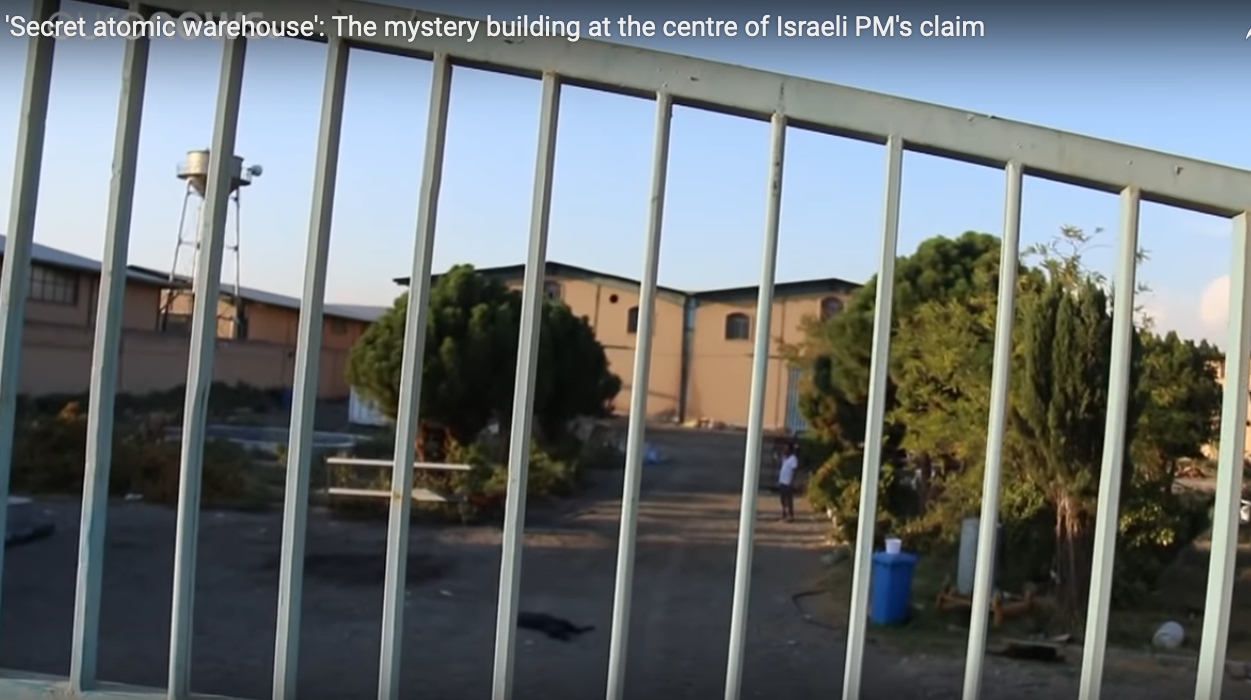
Figure 2. A ground photo of the Turquz Abad site, taken from outside of the gated entrance. Dated September 30, 2018, following Israeli Prime Minister Netanyahu’s description of the site at the United Nations on September 27, 2018, and consistent with comparison of overhead imagery from that time. Credit: Euronews, https://www.youtube.com/watch?v=fszsjHyGSUI.
Background
On September 27, 2018, Prime Minister Benjamin Netanyahu of Israel revealed at the United Nations (UN) General Assembly the existence of a secret warehouse in the Turquz-Abad district in Tehran, which he said held a range of equipment and materials (as much as “300 tons”) in 15 shipping containers related to Iran’s past or possibly on-going nuclear weapons efforts.11 He also stated that the facility had held 15 kilograms of radioactive material, likely uranium, that Iran had since dispersed around Tehran. He criticized the IAEA for not being willing to inspect the site after Israel had quietly provided the IAEA with evidence of the Atomic Warehouse and information about Iran’s efforts to empty it. This emptying appears to have followed public revelations that Israel had seized a portion of Iran’s separate Nuclear Archive, containing nuclear weapons files and curated documentation of a highly organized Iranian nuclear weapons program.
Figures 3 to 5 show the Turquz-Abad site in 2017 and 2018 before, during, and after what can be called the first sanitization effort, summarizing the comprehensive imagery timeline published in the earlier Institute study. By the time Netanyahu announced the existence of the site in September 2018, the latter imagery shows the removal of the shipping containers and other equipment from the site.
In spite of the information provided to the IAEA by Israel over the summer of 2018, while the shipping containers remained at the site, the IAEA did not request Iran to allow a visit to the site. Subsequent to Netanyahu’s announcement, Director General Yukiya Amano emphasized the IAEA’s independence and its need for rigorous review of third party information.12 An important opportunity was lost.
In early 2019, the IAEA did finally ask Iran to clarify activities at the site and subsequently visited the site on February 22, 2019, under complementary access. It took environmental samples and evaluated the site, leading to its finding of undeclared uranium particles and requests for Iran to resolve this matter.
Figure 3. The Atomic Warehouse before first sanitization that started in mid-2018.
Figure 4. Shipping containers were removed during the summer of 2018.
Figure 5. By September 20, 2018, almost all containers had been removed. By October 20, 2018, the site was almost empty.
Probable Renewed Sanitization Activities
Commercial satellite imagery taken after September 2018 allows for an evaluation of activities at the Turquz-Abad site after Iran emptied the site. In particular, this study concentrates on activities at the site from November 2018 into February 2019, up to the visit of the IAEA inspectors. A series of images shows a range of activities starting from mid-December that appear related to sanitization.
Figures 6 to 9 show the site from November 2018 until late February 2019, a period during which the site first looked relatively clear, and then underwent an apparent intensified second round of sanitization activities.
Starting after mid-December 2018, a light tan-colored earthen material, possibly soil or crushed rock/gravel,13 appears to have been spread across the site. Mixed with a darker material, possibly darker soil or asphalt, this material was placed by December 21, 2018. The material does not appear to be a spill but deliberately and carefully placed. Notably, it appears where some of the previously removed containers had been located, and also where apparent burn sites used in May and June 2018 were located.
Starting around December 26, rubble was eventually placed on nearly all of the areas where the earthen material had been spread. The rubble pile distribution reached its peak volume by February 19, 2019, just three days before the IAEA visit.
Figure 10 shows the appearance of the site soon after the IAEA visit, with the addition of small containers. Figure 11 is an image of the site on October 14, 2019, and most notably, all the rubble piles have been completely removed, but the darker underlying material patterns appear similar to what was observed before the rubble piles were emplaced.
Another Cover-Up in a Long Line of Cover-Ups
These activities at Turquz-Abad are the latest in a long line of sanitization activities Iran has taken at other sites, suspected to be or known to have been involved in nuclear weapons development or production activities. The two most prominent are the razing of buildings at the Physics Research Center in 2003 and 2004 and the multi-year activities starting in 2012 to empty and modify buildings and the surrounding area, including asphalting and wash-downs, at the Parchin high explosive testing site.14
Iran has used various cover stories at the Turquz-Abad site. The first one, before the IAEA visited, was that it was a carpet cleaning facility. Undoubtedly, it has told other ones to the IAEA by now, as it tries to explain away the presence of the uranium particles and the evidence collected by Israel. The newly spread earthen material and rubble piles, which were evidently intended to thwart IAEA environmental sampling but failed to do so, are likely just part of another cover story. Iran can also be expected to try to shift the focus from the Nuclear Archive and undeclared nuclear weapons efforts to the activities of the Atomic Energy Organization of Iran (AEOI), which it will attempt to call “civil.”
Source of Uranium Particles
The uranium particles reportedly indicate that Iran has conducted uranium conversion activities, a term which includes several activities from converting yellowcake into uranium oxide to producing uranium metal from uranium tetrafluoride (“green salt”). As mentioned above, the uranium’s characteristics and age do not correspond with uranium from Iran’s declared nuclear facilities.
Two cover stories can be discounted. As discussed above, two uranium particles are dated to 2004 or before. Thus, discarded equipment from the Gchine uranium mine and mill (Bandar Abbas Uranium Plant) somehow sent to the Turquz-Abad site cannot be the source of the uranium. The reason is that this plant did not begin full operations until 2006. Moreover, the particles are inconsistent with uranium from simple ore processing.
A second discredited cover story is that the tenant of the warehouse, supposedly involved in the scrap metal business, left in 2018. However, the imagery shows that the probable sanitization activities started in late 2018 and extended up through early 2019, until just before the IAEA visited and took environmental samples on February 22, 2019.
The uranium samples suggest that there exist or existed undeclared Iranian uranium conversion activities. The purpose of those uranium conversion activities is suspected to be related to the research, development, or production of nuclear weapons.
The publicly available information on the Nuclear Archive implies that Iran, on at least a pilot-scale, had likely been secretly converting natural uranium, including converting uranium oxide into uranium tetrafluoride for subsequent reduction to uranium metal as part of developing and making nuclear weapons. In addition, Iran may possibly also have made uranium hexafluoride in secret in preparation for enrichment to weapon-grade uranium.
The following are several plausible undeclared Iranian conversion process steps that could involve natural uranium based on information in the Nuclear Archive or IAEA reports.
Yellow cake –> Uranium oxide (UO2) –> Uranium tetrafluoride (UF4) –> Uranium hexafluoride (UF6), likely the Green Salt Project mentioned in the IAEA’s PMD investigation
Yellow cake → UO2 à UF4 à Uranium metal
UF6 –> UF4 –> Uranium metal
The last two processes lead to uranium metal, which would have had the following uses in activities described in the Nuclear Archive:
Neutron initiator experiments at Parchin (in the archive, these experiments used natural uranium metal in combination with deuterium, a possible reason for uranium particles found in 2015 in Parchin).
Manufacturing of nuclear weapon components; natural uranium used instead of weapon-grade uranium as part of developing the manufacturing capability.
High explosive compression tests involving nuclear weapons components; natural uranium metal would serve as a surrogate for weapon-grade uranium in the core.
There are two main ways to produce uranium metal from uranium tetrafluoride: the use of pure calcium or magnesium as a reducing agent. Either material will leave impurities in the uranium metal or wastes. The use of calcium was described in a document the IAEA found in Iran about making hemispherical weapon-grade uranium cores. The 15-page document, apparently supplied to Iran by the A.Q. Khan network, describes procedures for the conversion of uranium hexafluoride via uranium tetrafluoride to uranium metal and then for the casting of uranium metal into hemispheres (these processes are required to manufacture the core of an implosion-type nuclear weapon).
Where are we now? What should be done?
After obliquely warning Iran, i.e. without naming the Turquz-Abad facility, in the August 30, 2019 quarterly IAEA Iran report of the need for full and timely cooperation, acting IAEA Director General Cornel Feruta reported in early October 2019 that engagement with senior Iranian officials had occurred in recent weeks and that engagement represented a “step in the right direction” in addressing activities at this site.15
The progress did not last long. In early November 2019, Feruta convened an extraordinary meeting of the IAEA Board of Governors to discuss the new concerns about the Turquz-Abad site. In the most recent quarterly report on Iran, the IAEA called upon Iran to cooperate on this matter, raising the potential finding of non-compliance with its safeguard agreements. According to this report:16
It is essential for Iran to continue interactions with the Agency to resolve this matter as soon as possible. On-going interactions between the Agency and Iran relating to Iran’s implementation of its Safeguards Agreement and Additional Protocol require full and timely cooperation by Iran.
However, the IAEA has not issued an official report to its members on this matter, but it should. This report should also be made public.
The nature of its published comment suggests that Iran’s explanations are not consistent with characteristics of the uranium particles found at the site. Moreover, the IAEA undoubtedly also used commercial satellite imagery, combined with its on-site visit, to observe recent activities that could be evidence of sanitization. Then, of course, there is the issue of all the equipment, materials, and likely documents in shipping containers, and possibly the warehouse itself, that were hauled away from the site.
As we have recommended previously, it is urgent that Iran be pressed to produce all the nuclear-related equipment and material, and any associated documentation, previously stored at the Turquz-Abad site. There is no evidence that Iran systematically destroyed these items, which in any case should occur under IAEA monitoring
The IAEA has tried since 2003 to verify the correctness and completeness of Iran’s declarations under its comprehensive safeguards agreement supported by the additional undertaking by Iran with an agreement with Britain, France, and Germany (the EU-3) in 2003, numerous U.N. Security Council resolutions, and since 2015 by the Joint Comprehensive Plan of Action (JCPOA). This process has revealed gradually the nuclear weapons efforts of Iran under the AMAD Plan and afterwards, which is in violation of Iran’s undertakings under the Nuclear Non-Proliferation Treaty. The findings from the information from the Israeli captured Nuclear Archive, the IAEA findings at Parchin in 2015, and the IAEA’s discovery of uranium particle contamination at Turquz-Abad increasingly indicate that there still may be undeclared nuclear material and activities in Iran. The existence of nuclear weapon related activities and its concealment, plus the ramping up of uranium enrichment without any economical or technical long-term reason, puts the onus to the IAEA Secretariat and its governing body, the Board of Governors. Is the IAEA, the competent authority in the implementation of the Comprehensive Safeguards Agreement, ready to meets its obligation, to ensure that the Iranian nuclear program serves only peaceful purposes?
Figure 6. The site remains relatively quiescent during November and early December 2018.
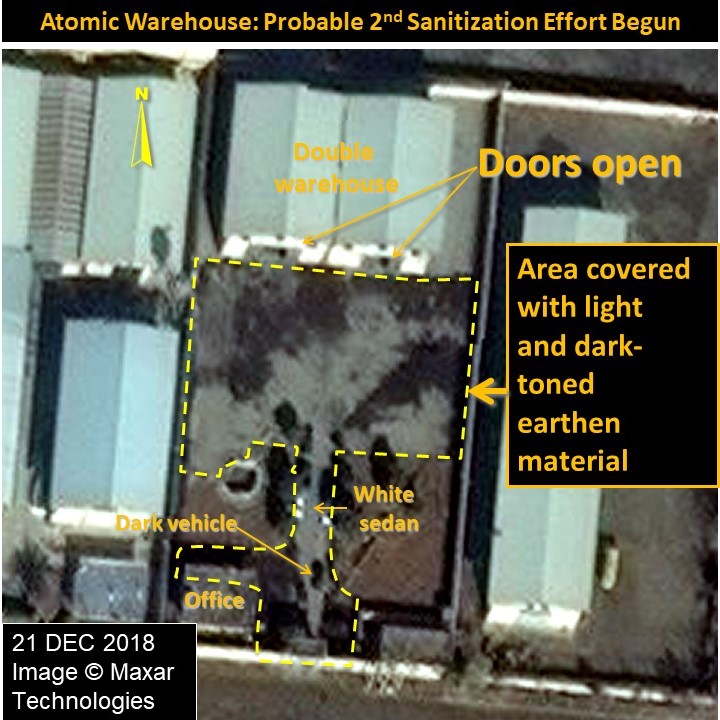
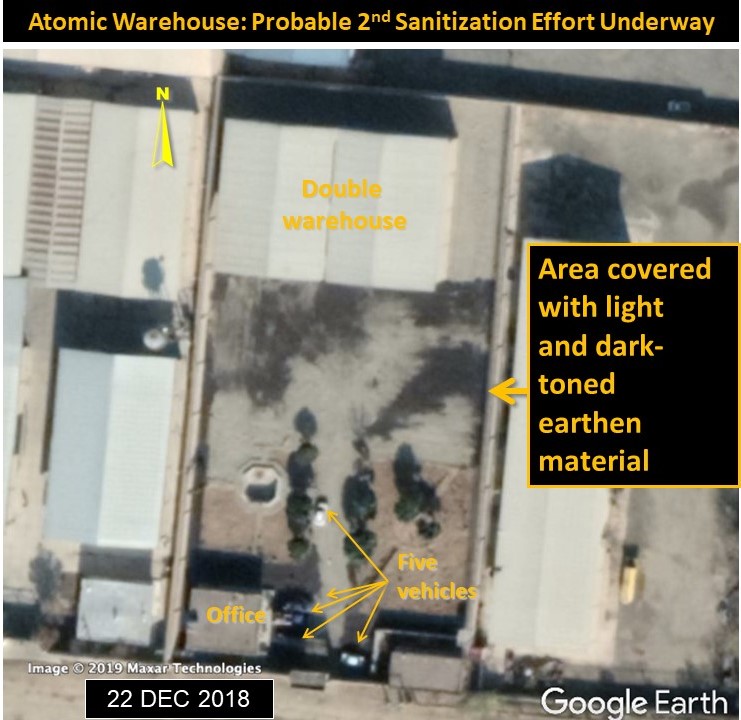
Figure 7. After mid-December 2018, light and dark earthen material was spread across the site.
Figure 8. Rubble was placed in late December 2018, and the pile grew in January.
Figure 9. By February 19, 2019, three days before the IAEA visit, the rubble pile grew to cover almost the entire area in front of the double warehouse.
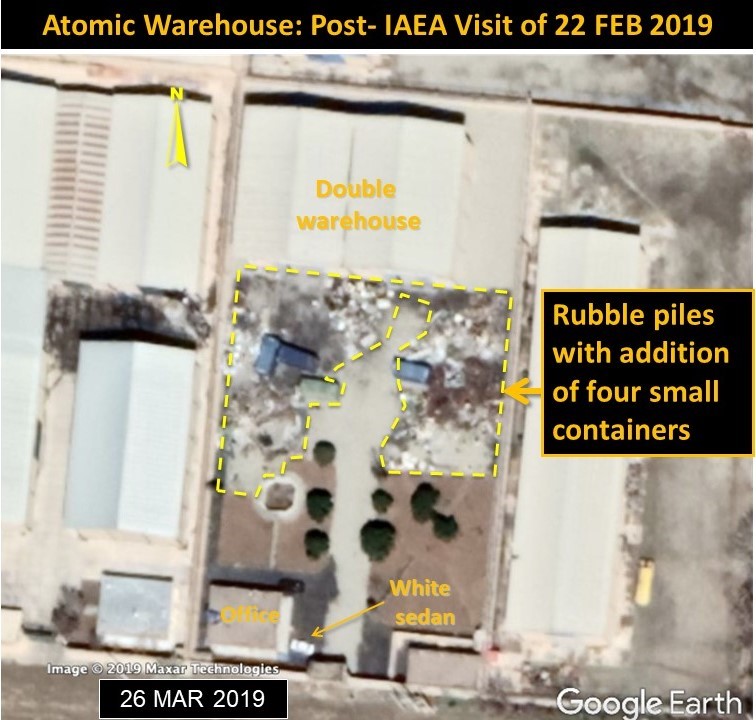
Figure 10. By the end of March 2019, four small containers appeared among the rubble piles.
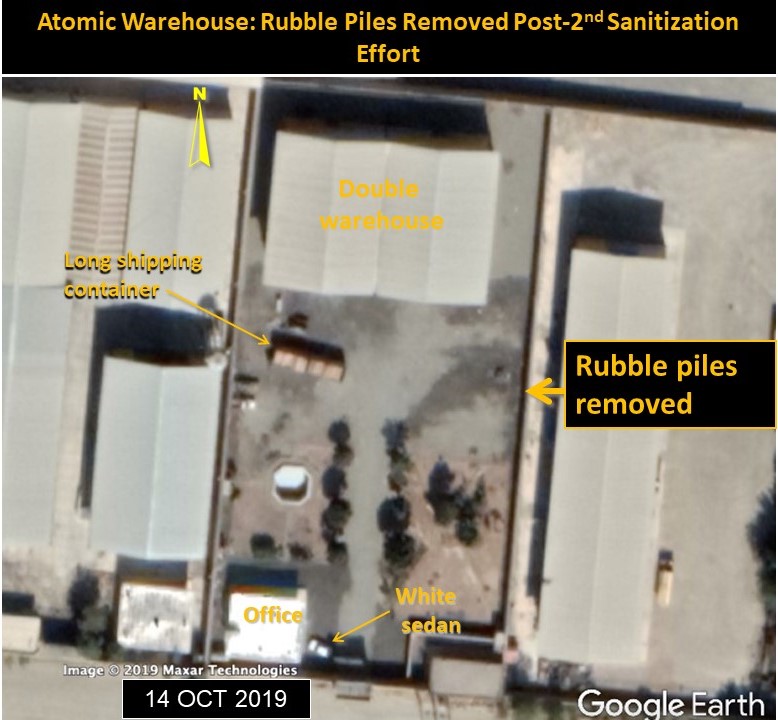
Figure 11. The site is cleared again after the IAEA visit, and by October 14, 2019, all the rubble had been removed.
[1] Olli Heinonen is Former Deputy Director General of the IAEA and head of its Department of Safeguards. He is a Senior Advisor on Science and Nonproliferation at the Foundation for Defense of Democracies.
[2] Frank Pabian is a retired Los Alamos National Laboratory (LANL) Fellow from both the Global Security and Science-Technology-Engineering Directorates, most recently in the Geophysics Group, Earth and Environmental Sciences Division, with 45 years of experience in satellite remote sensing for nuclear nonproliferation. He also served in the 1990s as a United Nations Nuclear Chief Inspector in Iraq for the IAEA.
3. “Iran refuses to cooperate with IAEA,” TV-7 Israel News, November 8, 2019. https://www.tv7israelnews.com/iran-refuses-to-cooperate-with-iaea/ ↩
4. Behrouz Kamalvandi, Spokesperson for the Atomic Energy Organizaton of Iran specifically mentioned Turquzabad in the context of the IAEA’s discovery of uranium particles in Iranian media, while downplaying the significance of the particles. See ISNA, https://www.isna.ir/news/98081810427/کمالوندی-ظرفیت-غنی-سازی-۵-۲%DB%B0-یا-۶%DB%B0-درصد-را-داریم-در-روند-بازرسی-ها ↩
5. See for example, David Albright, Olli Heinonen, Frank Pabian and Andrea Stricker, “Revealed: Emptying of the Iranian “Atomic Warehouse” at Turquz-Abad,” Institute for Science and International Security, November 29, 2018, http://isis-online.org/isis-reports/detail/revealed-emptying-of-the-iranian-atomic-warehouse-at-turquz-abad/8 ↩
6. Stephanie Cooke, “IAEA, Mounting Tensions with Iran,” Nuclear Intelligence Weekly, November 8, 2019. ↩
7. Ibid. ↩
8. Behrouz Kamalvandi, Spokesperson for the AEOI quoted by ISNA, https://www.isna.ir/news/98081810427/کمالوندی-ظرفیت-غنی-سازی-۵-۲%DB%B0-یا-۶%DB%B0-درصد-را-داریم-در-روند-بازرسی-ها ↩
9. Ibid. ↩
10. “Revealed: Emptying of the Iranian “Atomic Warehouse” at Turquz-Abad.”↩
11. See John Irish and Arshad Mohammed, “Netanyahu, in U.N. speech, claims secret Iranian nuclear site,” Reuters. September 27, 2018, https://www.reuters.com/article/us-un-assembly-israel-iran/netanyahu-in-un-speech-claims-secret-iranian-nuclear-site-idUSKCN1M72FZ ↩
12. “Independence of agency ‘paramount’, stresses UN nuclear chief in apparent response to Israel’s claim of secret Iran site,” UN News, October 2, 2018, https://news.un.org/en/story/2018/10/1022052 ↩
13. See: Statement by Netanyahu, September 9, 2019, https://twitter.com/israelipm/status/1171115063681454081 ↩
14. David Albright, Sarah Burkhard, Olli Heinonen, Allison Lach, and Frank Pabian, “Revisiting Parchin: With plenty of evidence of past Iranian nuclear weapons activity at Parchin, the IAEA needs to revisit the site, Institute for Science and International Security, August 21, 2017, http://isis-online.org/isis-reports/detail/revisiting-parchin/8#images ↩
15. “After pressing Iran for answers, IAEA reports improved cooperation,” Reuters, October 4, 2019, https://www.reuters.com/article/us-iran-nuclear-iaea/after-pressing-iran-for-answers-iaea-reports-improved-cooperation-idUSKBN1WJ0XO ↩
16. Available at http://isis-online.org/uploads/iaea-reports/documents/IAEA_Iran_Safeguards_Report_11Nov2019.pdf ↩

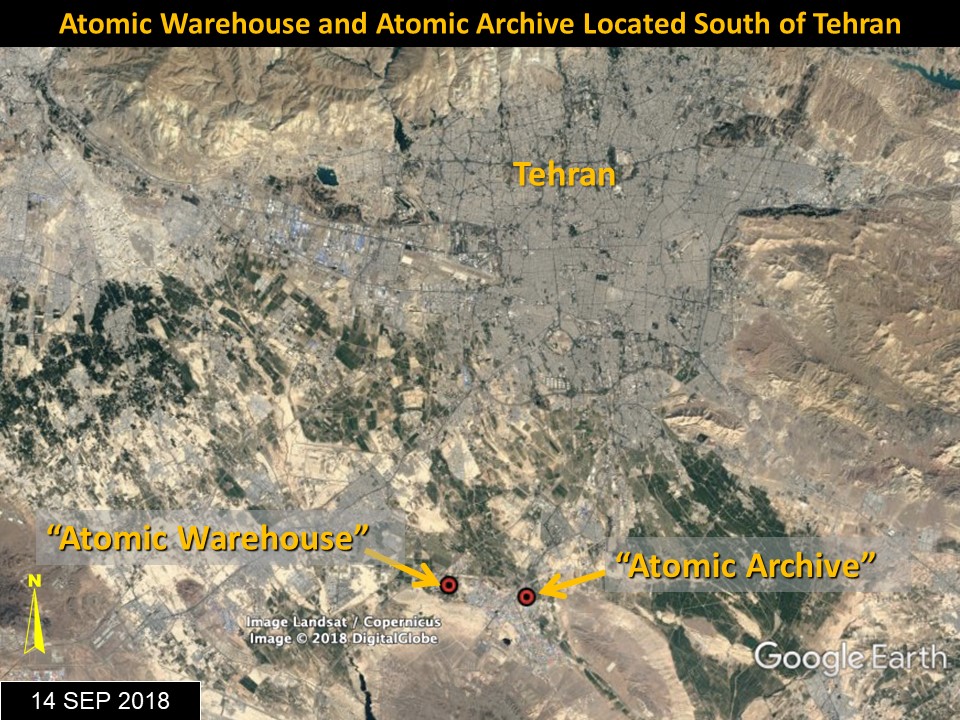
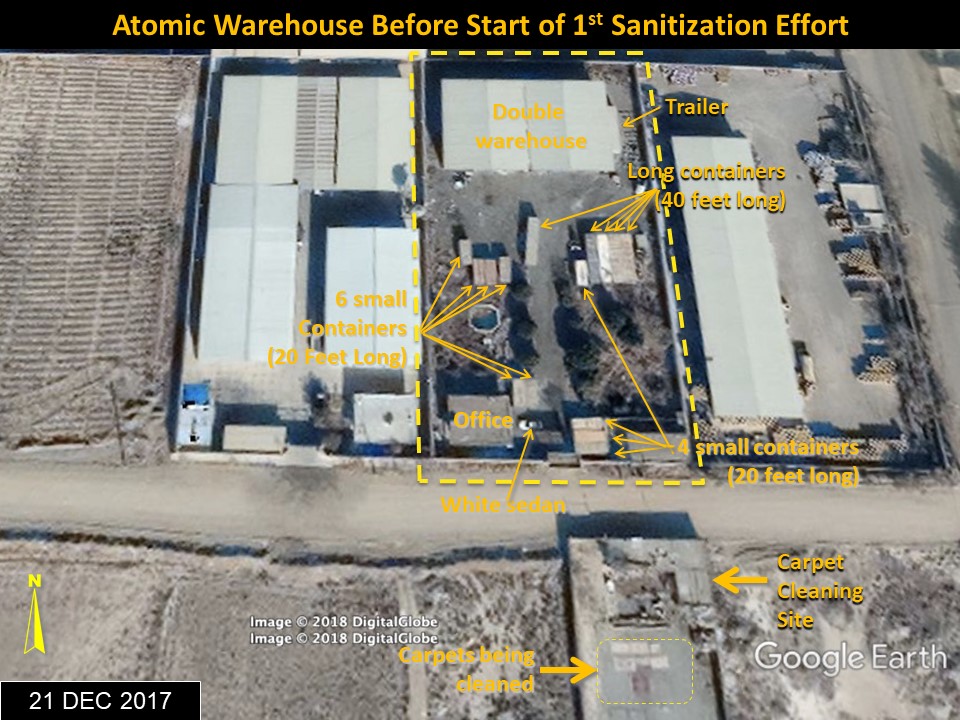
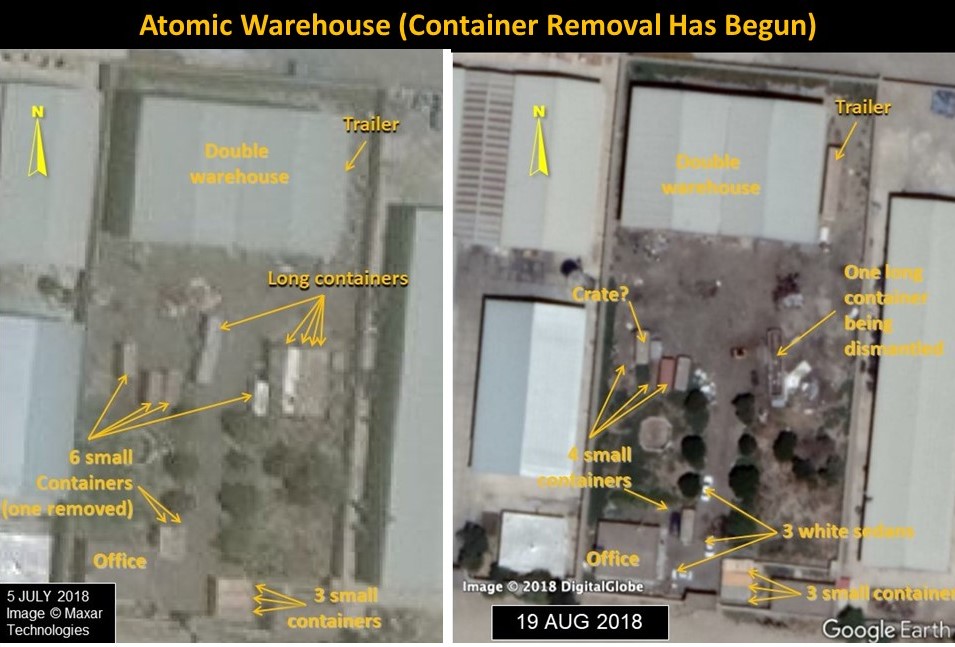
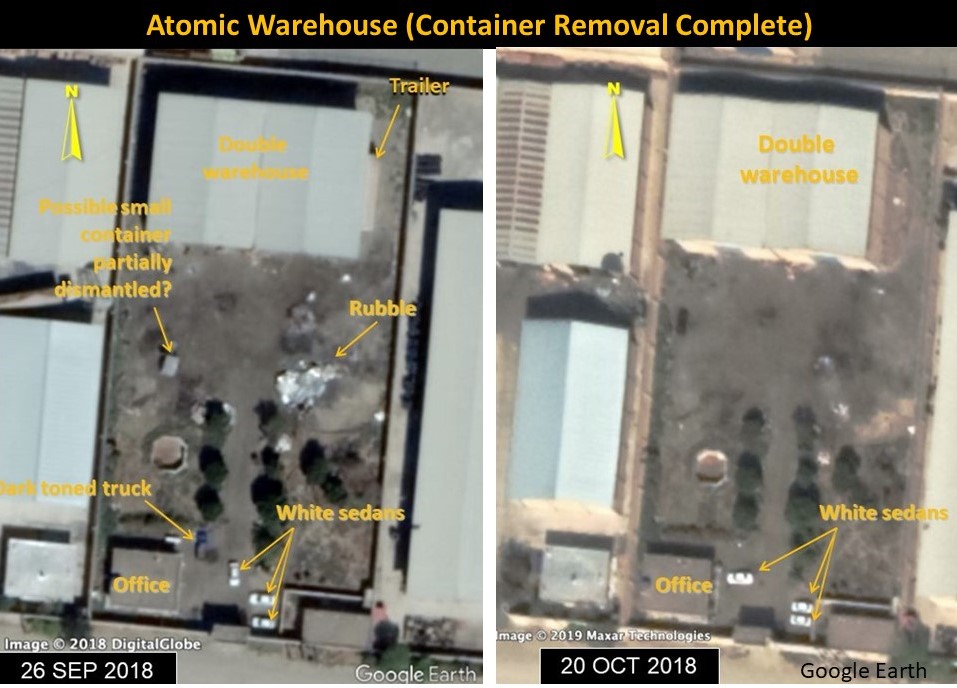

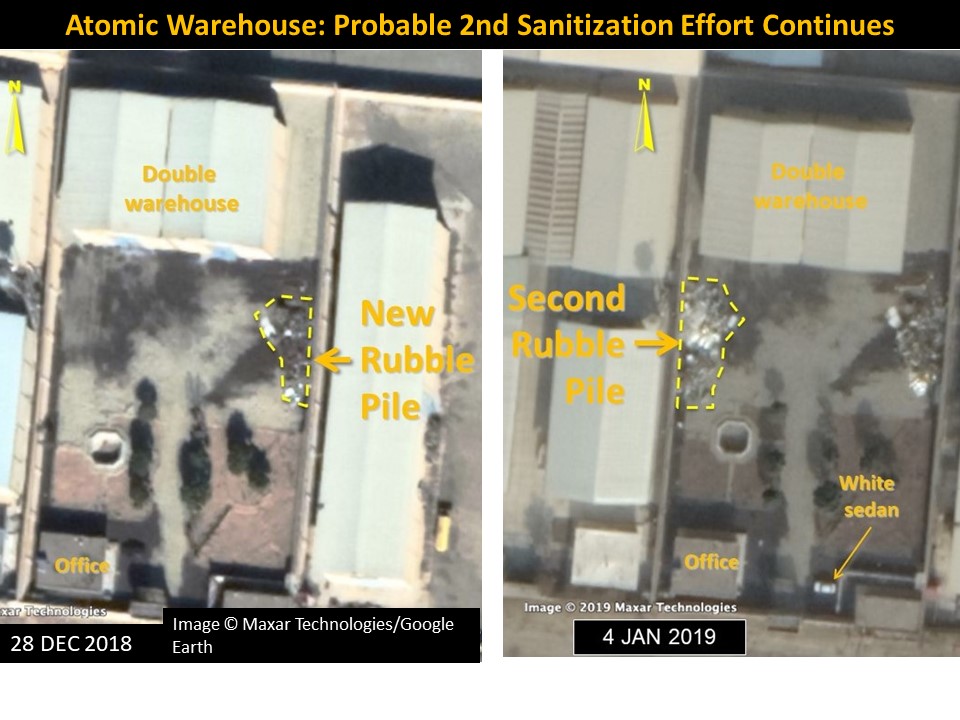
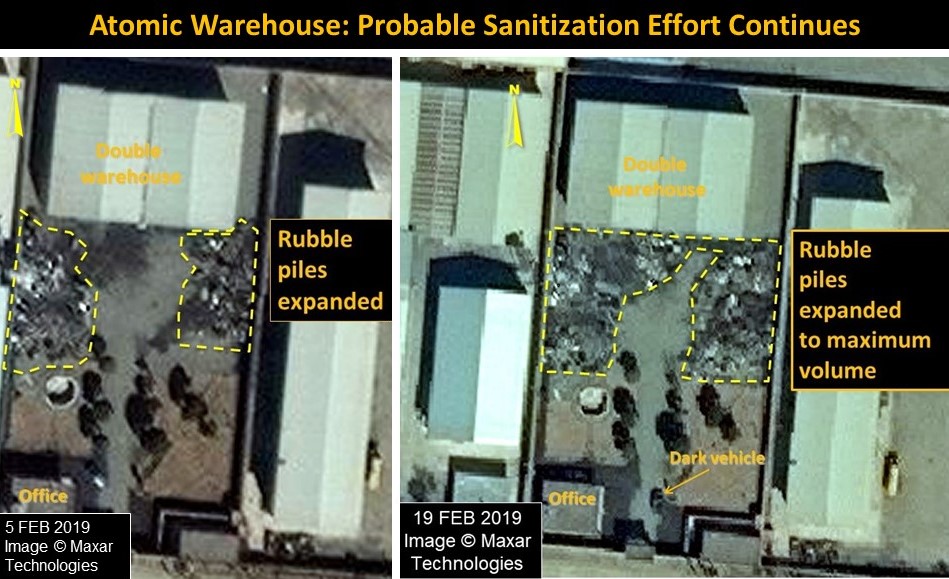
 twitter
twitter